Trevor Leggett

Trevor Leggett studied Vedanta and the traditional Yoga of the Self for over sixty years and was a pupil of Hari Prasad Shastri for eighteen years. He studied Judo, Zen and Shogi in Japan achieving sixth Dan in Judo from the Kodokan and 4th Dan in Shogi (Japanese chess). He died in August 2000.
Trevor Leggett has written marvellous books on The Bhagavad Gita Yoga-s, The Patanjali Yoga Sutras, Zen, teaching stories from the Yoga and Zen traditions and books on Judo and Shogi.
All of his books on Yoga, Zen, Judo and Shogi are now available in affordable paperback editions and many are also available as Ebooks and audio books.
Full details of all his books as well as recordings of some of his talks to different spiritual groups are available from the website of Trevor Leggett Adhyatma Yoga Trust at https://tlayt.org

ENCOUNTERS IN Yoga and Zen
Meetings of Cloth and Stone
The Stories Gleaned from the author’s experiences over many years Yoga and Zen training as well as from conversations with teachers, folk stories and temple magazines, this is a fascinating and enlightening compendium of tales from the Yoga and Zen traditions.
Stories such as these are used in many spiritual schools’ teaching – they’re the flint or steel that makes the spark which, when nurtured daily, fires the imagination, heralds enlightenment and insight.
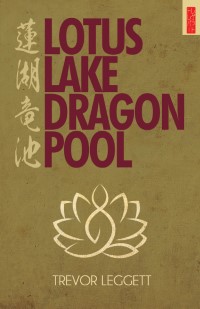
Lotus Lake, Dragon Pool
FURTHER ENCOUNTERS IN Yoga and Zen
Collected by the author over many years, these stories from the Yoga and Zen traditions are the flint and steel that strike a spark that lights up the mind with insights that one should ponder daily to bring to light ever deeper meaning. They may be similar in intent to Zen Koans – but they are rather different in content. In many Zen Koans someone says or does something extraordinarily inappropriate, which catches your attention just because it’s extraordinary – but afterwards the light from them has to be applied to daily life. In contrast, the stories here are often ordinary incidents from ordinary lives (not that there aren’t some extraordinary ones too!) that nevertheless open the mind’s eye to the vast potential for realization and inspiration to be found in daily life.
The pictures featured throughout this book were brushed by Jacques Allais in the Suiboku style, in which he was an acknowledged expert. The innate beauty of this ancient monochrome ink-painting technique lies in its subtlety of expression, in which infinitely more is suggested than is drawn on the page – making it the perfect vehicle for focusing meditation practice as well as an ideal complement to the stories in this book.
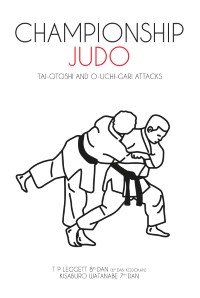
CHAMPIONSHIP JUDO
Tai-Otoshi and O-Uchi-Gari Attacks
Written over sixty years ago, Trevor Leggett and Kisaburo Watanabe, drew on their great experience of Judo, both in Japan and the West, to offer a step by step guide to Taiotoshi and Ouchigari in great detail which will be invaluable for students to develop their Judo skills. As the authors say in their introduction, the aim is to introduce the reader to ‘general attacking movement’, the sub-title of this book, using these two techniques, with an approach that can be applied with some minor adaptation to most other throws.
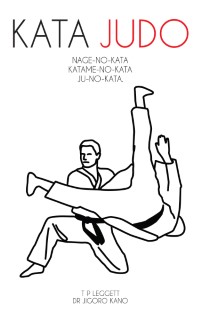
KATA JUDO
Demonstration of Throws by T.P. Leggett
Demonstration of Holds by T.P. Leggett
Demonstration of Gentleness by Dr. Jigoro Kano and T.P. Leggett
The practice of Kata Judo, the formal demonstration of throws (Nage-no-kata), demonstration of holds (Katame-no-kata) and demonstration of gentleness
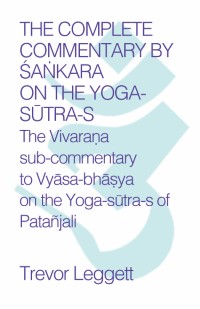
The Complete Commentary by Śaṅkara on the Yoga Sūtra-s
A full translation of the newly discovered text
Śaṅkara is the prime architect of the non-dual Vedānta school of Indian philosophy and practice. He is considered by many as India’s greatest religious and philosophical genius. This book ‘The Complete Commentary by Śaṅkara on the Yoga Sūtras’ contains the first complete English translation of the pre- viously unknown sub-commentary, or vivarana, by Śaṅkara on Vyāsa’s commentary on the Yoga Sūtras of Patañjali.
If the vivarana is a genuine sub-commentary by Śaṅkara, it is of the greatest importance to the study of Śaṅkara’s thought and teaching. Whilst the Yoga school of Patanjali differs from Śaṅkara’s Vedānta on certain philosophical points, Śaṅkara regards it as authoritative on meditation practice which is central to both schools.
Leggett considers the issues surrounding the authenticity of the Vivarana as a work by Śaṅkara in his Introduction and this is also commented on in the new Foreword by Dr Kengo Harimoto which was written for the eBook published in 2017.
This edition also includes a previously unpublished section by Leggett on ‘How to use this Book for Yoga Practice’ in which he says ‘When enthusiasm flags read sūtras 11.15-17; look around you and see how anxiety, pain and death are rushing towards us like an express train. Yoga is a way to escape them.’
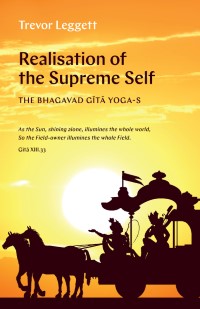
Realization of the Supreme Self
The Bhagavad Gītā Yoga-s
A practical training method, and not merely a text of revelation and worship – such is the true status of the ancient Sanskrit text Bhagavad Gītā. The special contribution of the Gītā is yoga, practical methods for expanding individual consciousness to realise the Supreme Self. This book presents the Gītā yoga in the light of explanations by Śan˙kara, the great seventh-century Indian philosopher and yogin, and Hari Prasad Shastri, who taught in Britain from 1929 till his death in 1956. The Gītā is directed in the first instance at the vigorously active, with responsibilities in the world. The actual practices of yoga are given for meeting the shock of the world-energies in the form of illusions, fear, greed, and anger. The whole basis of Gītā yoga is confirmation through experiment, not mere exhortation. This highly significant book presents the Gītā as a training manual for spiritual practice.
As the Sun, shining alone, illumines the whole world, So the Field-owner illumines the whole Field. Gītā XIII.33
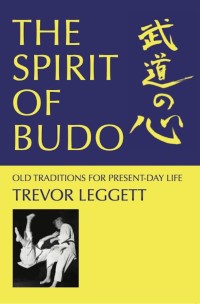
The Spirit of Budo
Old Traditions for Present-day Life
This book comprises eighteen essays written with simplicity and humour, but with an underlying discipline and authority derived from a lifetime of spiritual and martial arts training both in Adhyatma Yoga and Judo.
Trevor Leggett addresses matters including sportsmanship, achieving freedom of mind, training the inner self, developing an inner calm, and the four keys to learning – instruction, observation, inference and personal experience. He looks at the cultivation of these Budo qualities and suggests ways in which the lessons learned can be applied to daily life as well as to the practice of the martial arts.
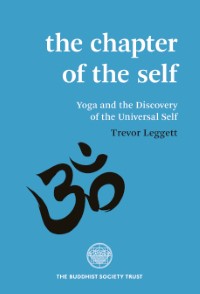
THE CHAPTER OF THE SELF
Illustrated
First published in 1978, the title of the book refers to the chapter in the ancient Apastamba Law Book on the practice of Yoga which, with the commentary on it by Śaṅkara, was translated by Trevor Leggett and which was available for the first time in English.
The second half of the book is devoted to the practice of Yoga drawing on the author’s years of experience of Adhyatma yoga and including details of Yoga practice from another work of Śaṅkara translated by the author, The Complete Commentary by Śaṅkara on the Yoga Sūtra-s of Patanjali.
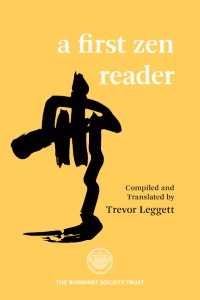
A FIRST ZEN READER
One of the contributors to this book writes ‘if asked what Zen is, to reply is very difficult’. It is the purpose of this anthology to suggest an approach to such a reply.
The texts included here are some outstanding selections from the treasury of Zen Literature including ‘A tongue tip taste of Zen’ by Takashina Rosen and Hakuin’s ‘Song of Meditation’ with the commentary by Amakuki Sessan. There is also a valuable ‘Note on the Ways’ written by Trevor Leggett explaining how by studying one of the Ways a student can keep Zen practice in touch with activity and daily life.

A SECOND ZEN READER
(The Tiger’s Cave)
A Second Zen Reader gives a fascinating insight into Zen life through a selection of texts translated from the Japanese by Trevor Leggett.
The main texts are ‘The Heart Sutra’ with a commentary by Abbot Obora of the Soto Zen sect and ‘Yasenkanna’ an autobiographical piece by Hakuin, the great eighteenth century Zen master.
Other texts include stories such as ‘The Tiger’s Cave’ and two discourses by Rosen Takashina, the late primate of Soto Zen.
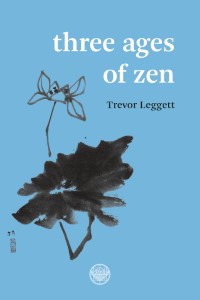
THREE AGES OF ZEN
The translations in this text illustrate three phases of Zen in Japan: Warrior Zen of crisis, when Japan faced and repulsed Kublai Khan’s naval attacks in the thirteenth-century; feudal Zen for eighteenth-century samurai officials and modern Zen found in twentieth-century Japan.
The first part presents koans from the secret records of temples in Kamakura. The second part is an inspiring essay written for a samurai official by abbot Torei and the third part contains extracts from the autobiography of Zen Master Tsuji Somei, one of the great Zen figures of twentieth-century Japan.
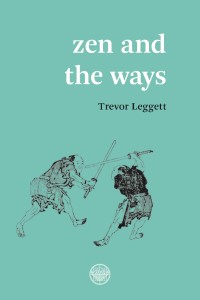
ZEN AND THE WAYS
Part one of Zen and the Ways gives an introduction to Zen including Koan Zen, which originated in China and was developed in Japan.
Part two, ‘Kamakura Zen’ describes the warrior Zen of the first three hundred years in Japan and contains the classic text ‘On Meditation’ by the master Daiku.
Part three covers the ‘Kamakura Koans’ and in parts four and five ‘The Ways’ are presented through texts from traditional sources.
Part six includes selected stories of the Ways in practice.
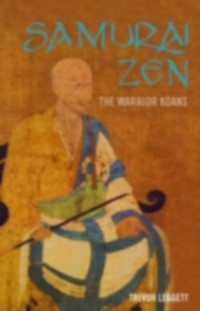
SAMURAI ZEN
(The Warrior Koans)
Samurai Zen; The Warrior Koans unites 100 of the rare riddles representing the core spiritual discipline of Japan’s ancient samurai tradition.
Unlike the classical Chinese koan riddles, the Japanese koans used incidents from everyday life – a broken tea cup, a water jar, a cloth – to bring the warrior pupils of the samurai to the Zen realization. Their aim was to enable a widening of consciousness beyond the illusions of the limited self, and a joyful inspiration in life – a state that has been compared to being free under a blue sky after imprisonment.
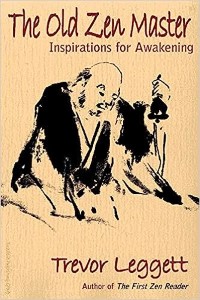
THE OLD ZEN MASTER
Inspirations for Awakening
Stories, parables and examples have been a favoured way of conveying spiritual insights and truths since time immemorial.
This volume, the last book by Trevor Leggett published in his lifetime, contains stories related not only to Buddhism, but to other religions, as well as to the martial arts, music, chess and incidents in ordinary life.
The author says that they contain hints which have helped him and which can be of help to others and that a new angle, or a new illustration- especially if it is an unexpected one- can be a help in absorbing practice, study and devotion.
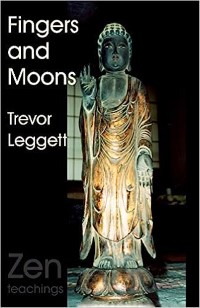
Fingers and Moons:
Zen Stories and Incidents
This book is a transcript of talks given at the Summer School of the Buddhist Society in the years 1982 to 1985 which form a collection of Zen stories and incidents pointing directly to the truth in ourselves.
There is an old saying in the Zen school: ‘When you pick them up the very stones are gold’… In our everyday life, to recognise the true worth of every little thing, every tiny fragment of what we are using every day, to respect it – that gives life real meaning…
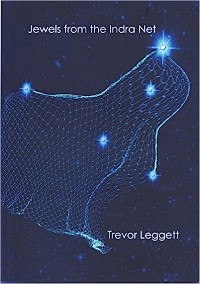
Jewels From The Indra Net
This is Trevor Leggett’s last book which was published in June 2014 to mark his Centenary.
The title of the book refers to the fabled net of the god Indra of which the strands have a jewel of truth at each juncture. The jewels reflect each other so that each one has deeper meanings in it.
The pieces on Eastern methods of inner training and realisation from a variety of traditions are not intended as theoretical instruction or entertainment. They all point to actual practice in life.
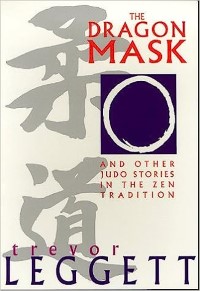
The Dragon Mask
and other Judo stories in the Zen tradition
In fifty absorbing Judo stories in the Zen tradition drawn from a lifetime of experience in Europe and the Far East, Trevor Leggett shows that Judo is a training for life.
Whilst they are in themselves entertaining, informative and even surprising, underneath each one is a wider application that can reach to the heart of our lives.
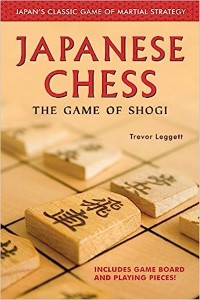
Japanese Chess
(Shogi: Japan’s game of Strategy)
Trevor Leggett’s book is the ultimate guide to Shogi, Japan’s unique variant of chess. Its step-by step instructions and easy to follow diagrams lead the reader through the strategies and intricacies of one of Japan’s most popular board games.
Shogi is the only variation of chess in which an opponent’s captured pieces can be dropped back onto the board as one’s own. This makes for extremely exciting, dynamic gameplay in which the momentum can quickly shift back and forth between players.
More than just an essential source of information, Japanese Chess features a fold-out shogi board and sturdy paper playing pieces – everything that you need to get started playing this challenging and fun game.
